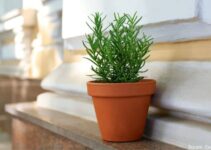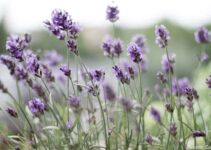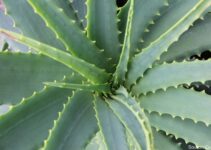Adorned with evergreen needle-like leaves, Spruces are coniferous trees that makeup the largest genus of the family Pinaceae. Spruces are a habitat-preferring variety, commonly distributed in colder zones like, northern temperate and boreal taigas.
The tall and symmetrical canopy can reach a height of 200 feet and above. The whorled branches of Spruce bear pointy, needle-like leaves that are singly attached on the stem upon peg like structures called sterigmata.
An obvious distinction of a Spruce from other conifers can be made from naked pegs that retain on the bark, when the Spruce attains maturity. The singly attached needles and hanging seed cones on the stem are yet other identifying characteristics of Spruce from other conifers (needles in groups and upright cone).
The conical canopy of varying sizes and shapes and hardy to colder temperatures, make Spruce a great specimen for landscaping. There are about 40 plus species and cultivars of Spruce cultivated as ornamental, for resin, wood and pulp.
Wish to have a frost-tolerant tree with a beautiful canopy and ornamental leaves, Spruce will top your list. From dwarf varieties like; Dwarf Alberta Spruce to Colorado blue spruce with blue needles, Spruce trees comes in a wide range of choice. Let’s have a look at 13 commonly cultivated Spruce varieties.
13 Different Types of Spruce Trees
1. Blue Spruce or Picea Pungens f. Glauca
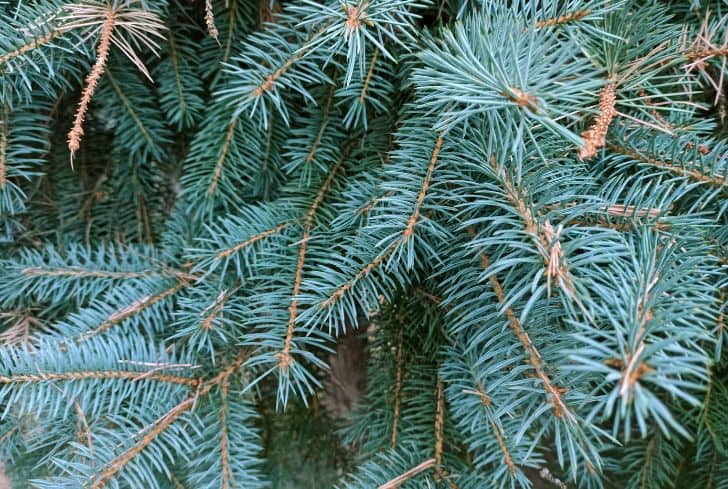
One of the most popular evergreens with silver blue-grey needles, Blue spruce is also known as Colorado Blue spruce. With a preference for full sun and any kind of well-draining soil, a Blue Spruce grows rather quickly when young and can reach a height of 50 feet and above. The pyramidal wide-spreading canopy is a typical screen plant and wind-breaker.
Regular heavy pruning is a must to maintain the shape and structure of this hard spruce.
2. Norway Spruce or Picea Abies
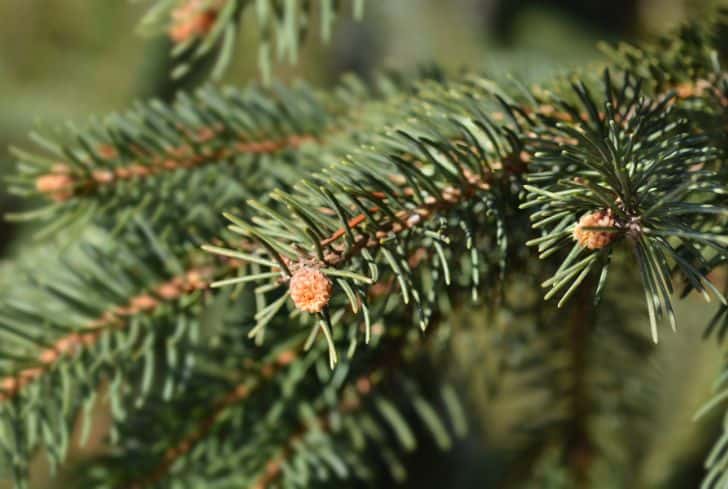
The fast-growing Norway spruce is a native of Northern Europe. The pyramidal canopy is decked with dark green needles. The hanging cones of Picea abies mimics, a weeping effect to the tree. Adapted to a variety of soils and drought, they grow to a height of 13 meters and above.
Norway spruce has some exotic cultivars like, Picea abies ‘Aurea Magnifica’, with golden needles, Picea abies ‘Pusch’ with small rose-shaped cones.
3. Oriental Spruce or Picea Orientalis
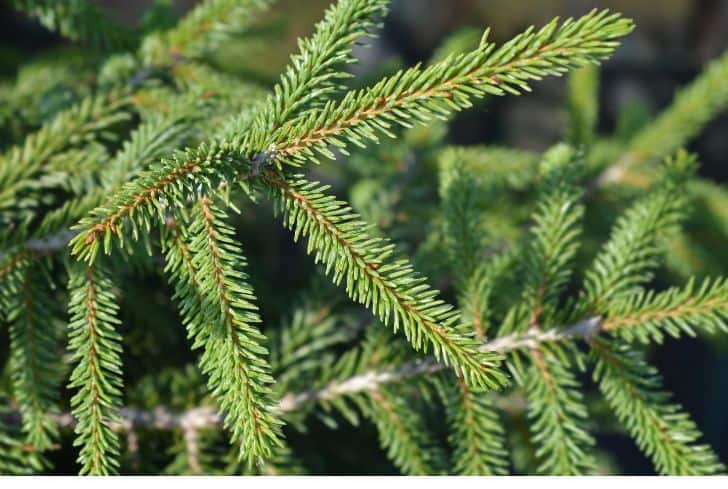
Looking for a slow-growing regular spruce that needs very little pruning, Oriental Spruce will be the ideal one. With branches close to the ground, Oriental Spruce can grow to a height of 40-50 meters. They have glossy green needles that point forward, giving a strong look to the tree.
A great fit for parks and large gardens, Oriental Spruce prefers full sun and well-draining soils.
4. White Spruce or Picea Glauca
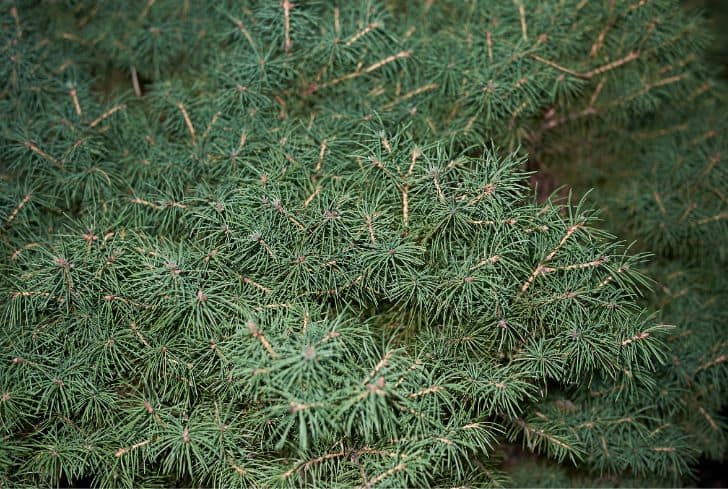
Native to Canada and northern America, White spruce is commercially known as the ‘Christmas tree’. When fully grown, they reach a height of 40 meters and a diameter of 1 meters and are resistant to wind and drought. The name White spruce comes from the whitish waxy coating of the needles.
As a landscape specimen, windbreaker to screening tree, White spruce fits in all. Picea glauca prefers full sun and well-draining soils and tolerates partial shade.
5. Sitka Spruce (Picea Sitchensis)
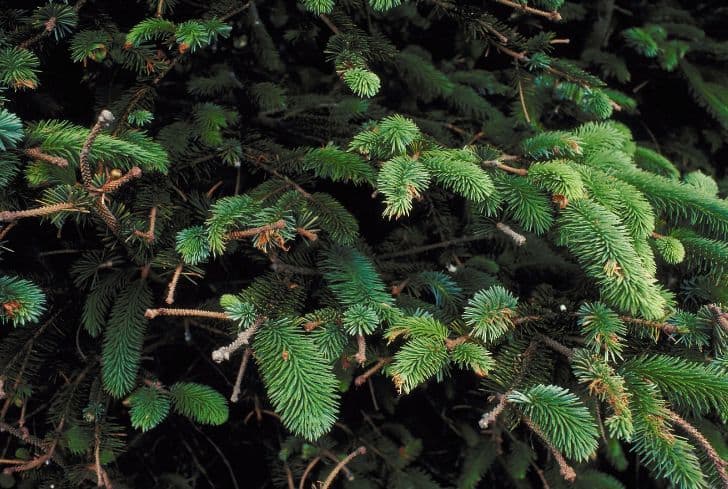
Being the tallest among the Spruce varieties, the largest Sitka Spruce identified was 318 feet in height. Picea sitchensis is the State tree of Alaska. The needles are sharp and flattened in cross-section, with two blue-white bands beneath. The cones are purple-red when young and have toothed tips.
Sitka survives well in moist rainforests with cool and wet soils under the full sun. The dense foliage of Sitka Spruce, forms a shelter for a wide variety of wildlife like; Rossbill, Tree creeper, Coal tit and Siskin, from harsh wind and rain.
6. Engelmann’s Spruce or Picea Engelmannii
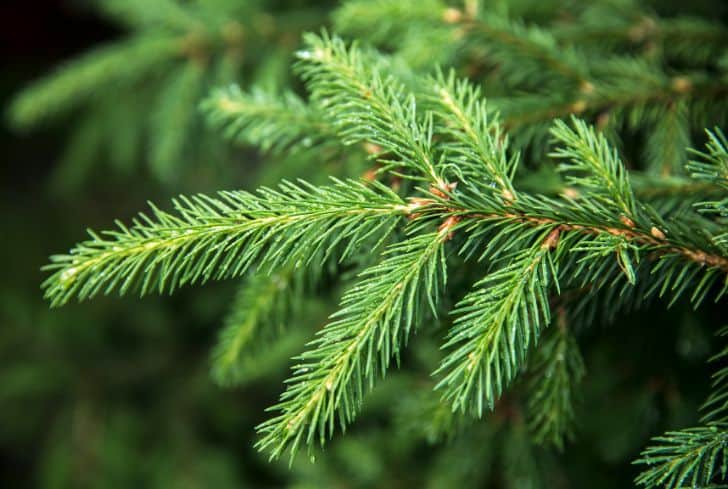
Named after the botanist and physician, George Engelmann Engelmann’s Spruce is considered as a subspecies of White spruce. Picea engelmannii has a natural distribution in higher altitudes like the Rocky Mountains and grows to a height of 70-100 feet.
The sharp conical crowns give a slender look to the tree, while the needles are blue-green with pointy tips. With exposure to full sun and well-draining soils, Engelmann’s Spruce can live for a century or more.
The wood of Picea engelmannii is commercially utilized for making stringed musical instruments and furniture.
7. Black Spruce or Picea Mariana
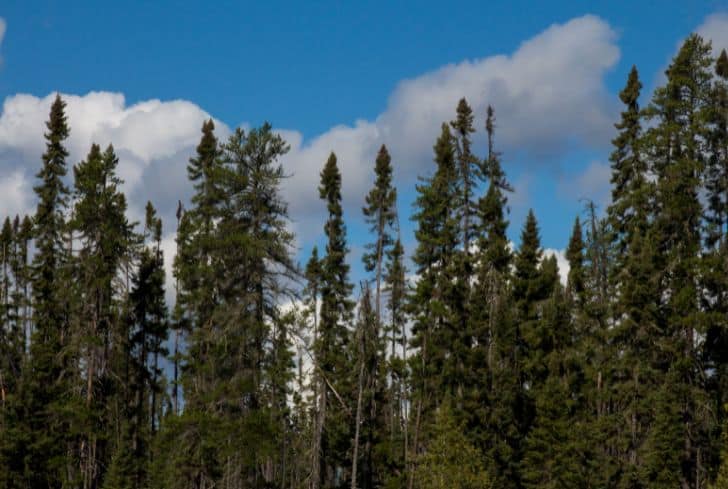
Commonly as the Bog Spruce or Swamp Spruce, Picea mariana is a slow-growing conifer found along bogs and wetlands. The short and stout needles have a black hue in mass and thus the name Black Spruce. The egg-shaped cones borne in clusters are the smallest (1-2 inch long) among the other varieties of spruces.
Acclimatized to bogs and wet soils under full sun, a Black Spruce can grow to 30-50 feet. The shallow root system makes them susceptible to heavy winds.
From the powdered bark as a soup thickener, seeds as emergency food and tea from needles, Black Spruce are counted for a variety of edible needs. It serves as a food source for a variety of wildlife like; Red squirrels, mice, voles, shrews, and Eastern Chipmunks and larval host for the Bog Elfin butterfly.
8. Brewer Spruce or Picea Breweriana
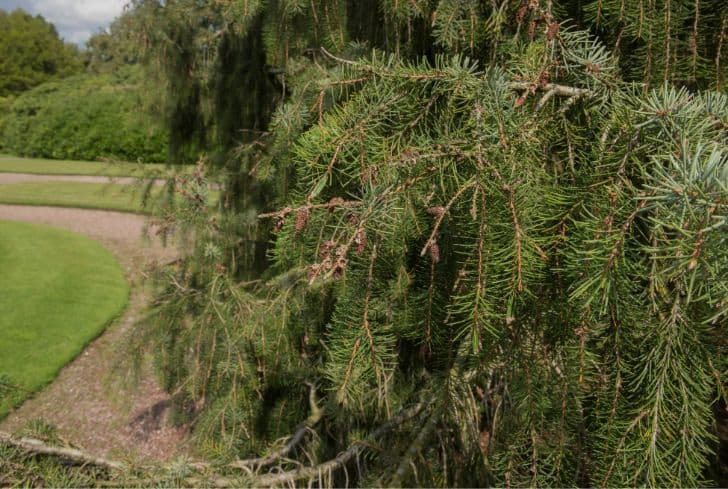
Picea breweriana is named after William Henry Brewer, botanist for the California Geological Survey and the first person to collect a specimen of Brewer spruce.
They are characterized by drooping branches with long and pointed needles that are triangular in cross-section. The pendant branches give a cascading effect to the tree, thus commonly known as Weeping spruce. Growing under full sun and well-draining soil a Brewer spruce can attain a height of 12 meters or more.
The hanging branches with bright yellow cones at the tip will give a characteristic look to your garden. Also, the slow-growing Picea breweriana needs low maintenance and is a good specimen for landscaping.
9. Dwarf Alberta Spruce (Picea Glauca ‘Conica’)
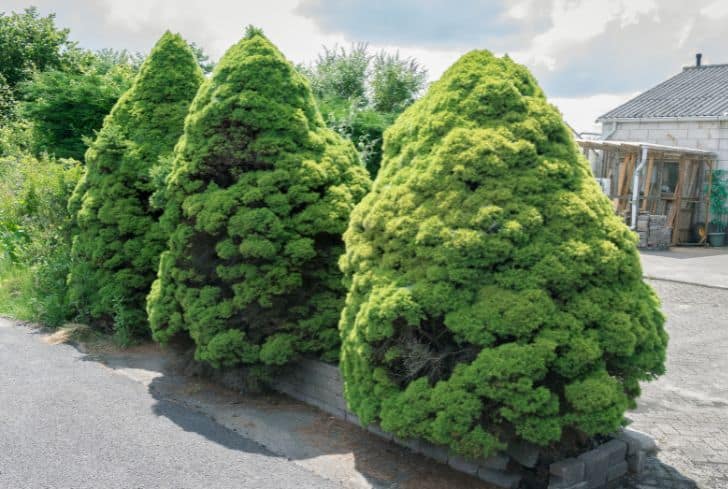
The slow-growing, dwarf cultivar of White spruce, Dwarf Alberta Spruce is cultivated for its bright green foliage. They have a compact, cone-shaped canopy with dense foliage. The needles are pretty soft and exude fragrance when crushed.
Well adapted to cold climates, Dwarf Alberta needs good air circulation and full sun for its survival. Grown under full sun and moist loam or alluvial soils, it takes about 25-30 years for the Dwarf Alberta to reach 1 foot.
They can be planted as a container plant, given some artistic pruning. Dwarf Alberta can also be used as a regular Christmas tree.
10. Colorado Spruce or Picea Pungens
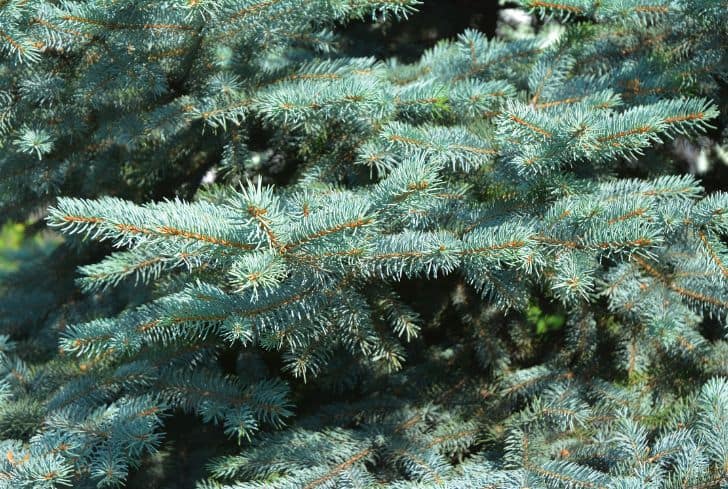
Colorado Spruce is a valued landscape specimen. They have a tall accent with a sharp conical canopy. The needles range from bright green to bluish green in color. Attaining a height of 50 feet, apex of Picea pungens often gets infected by crown gall disease and disfigured on maturity.
Colorado Spruce prefers well-draining soil and full sun for optimal growth. These slow-growing spruces need little maintenance and dislike water logging. Tolerant to drought conditions, Colorado Spruce is a good fit for xeriscaping.
11. Serbian Spruce or Picea Omorika
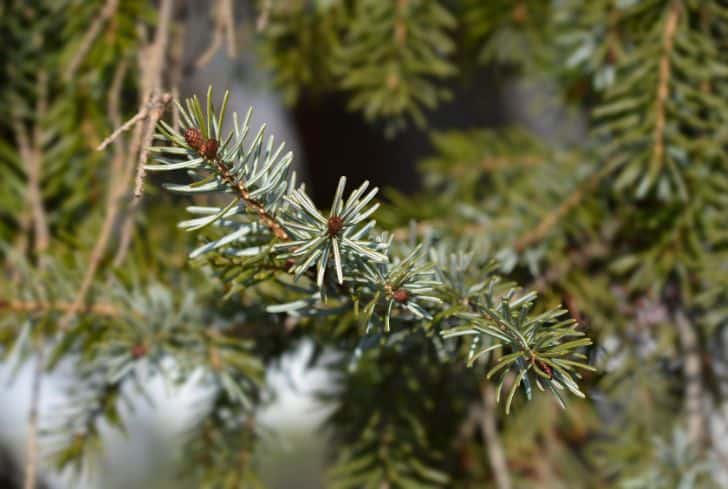
A threatened species native to limestone soils of Serbia, Bosnia, and Herzegovina, Serbian Spruce is one of the tallest spruces. This highly adaptable, drought-tolerant variety has a slender trunk which gives them a penciled appearance. The needles are glossy dark green with white lines, while the cone spots purple color when young. The mature yellow cones, coupled with bright green needles of Picea omorika make it a beautiful landscape specimen.
Picea omorika grows at its best in full sun and well-draining soil, provided with some shelter from strong winds.
The dwarf Serbian spruce, Picea omorika ‘Nana’ is a widely cultivated landscape specimen owing to its globose to a conical shape.
12. Red Spruce or Picea Rubens
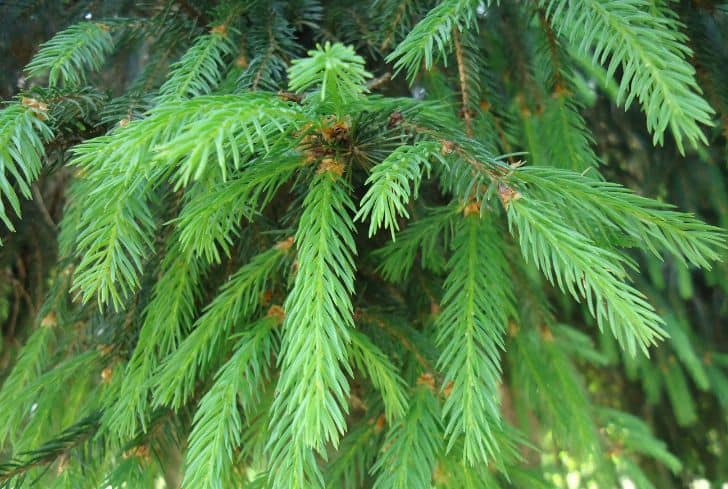
Also known as Yellow Spruce, West Virginia Spruce, Eastern Spruce, and He Balsam, Picea rubens is native to eastern North America. Accustomed to shady locations, Red spruce shows moderate growth when young. They wait for ample sunlight to set the maximum growth.
The needles are yellow-green in color with sharp tips. From cones, new twigs to bark of the Picea rubens have a red tint, thus the name Red spruce.
Picea rubens show a great preference for cool and moist habitats. Most of the Red spruce vegetation all around the world is found over glacial deposits.
Red spruce is the major food source for many wild animals like, Red Squirrels, White tailed-deer and White-winged Crossbills.
13. Bird’s Nest Spruce or Picea Abies ‘Nidiformis’
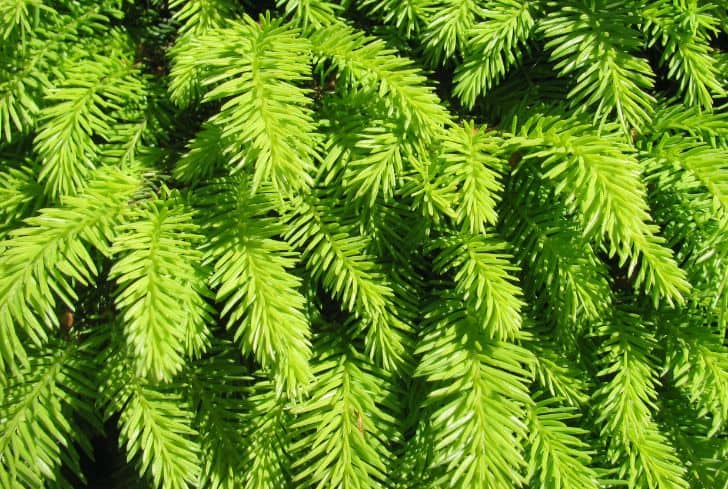
A cultivar of Norway spruce, Picea abies ‘Nidiformis’ has a rounded, spreading habit, which makes them look like shrub. The apex of the canopy forms a depression like shape giving it the name, Bird’s nest spruce. The needles are yellowish-green when young and turn grayish-green on maturation. The slow growth of Picea abies ‘Nidiformis,’ causing them 10 years or more to attain maturity.
Bird’s nest spruce is a hardy plant, and shows adaptation to a wide range of soil types. Picea abies ‘Nidiformis’ shows a preference for cool climates and is resists wind. Under the full sun and well-draining soils, they can be maintained as a container plant or landscape border.
